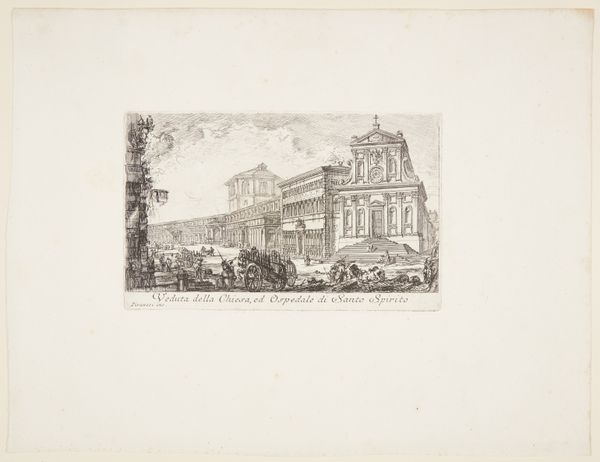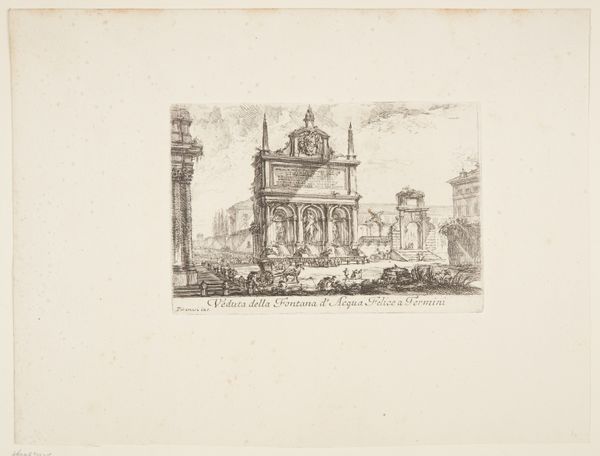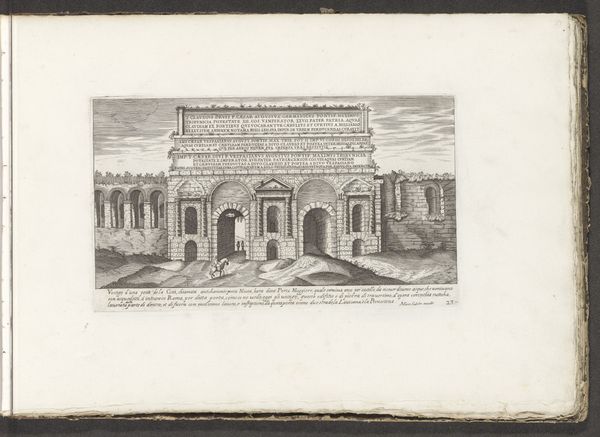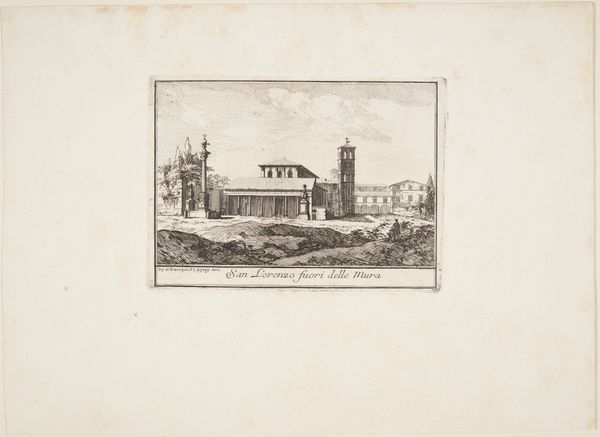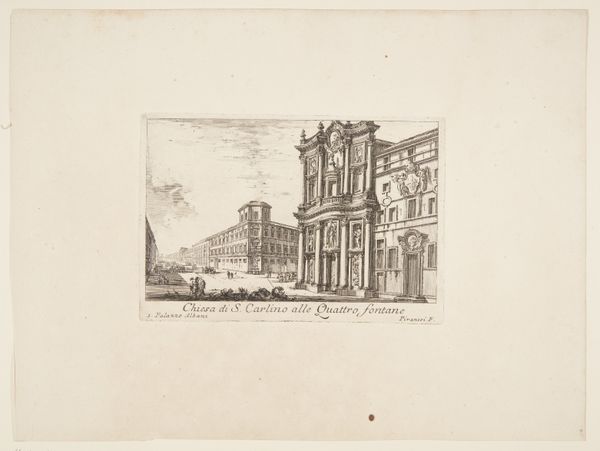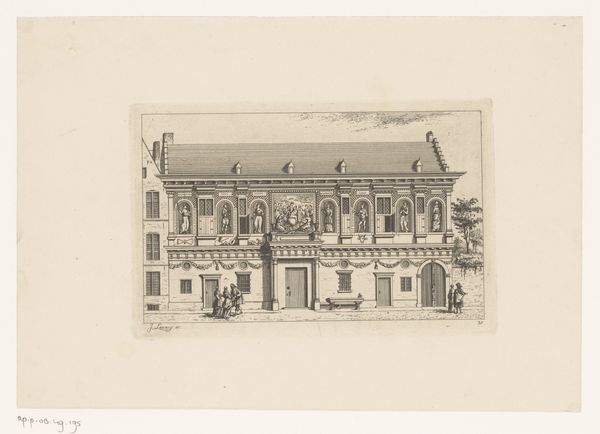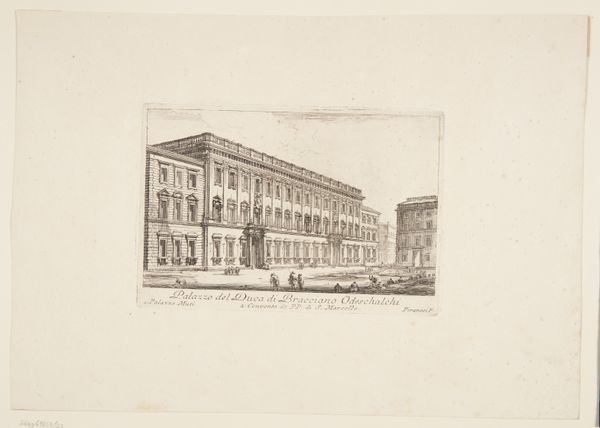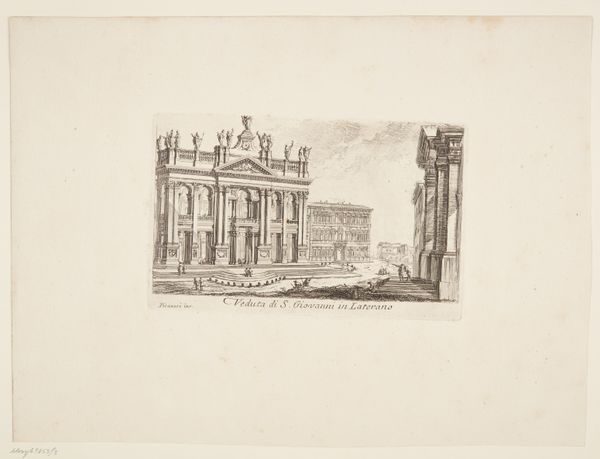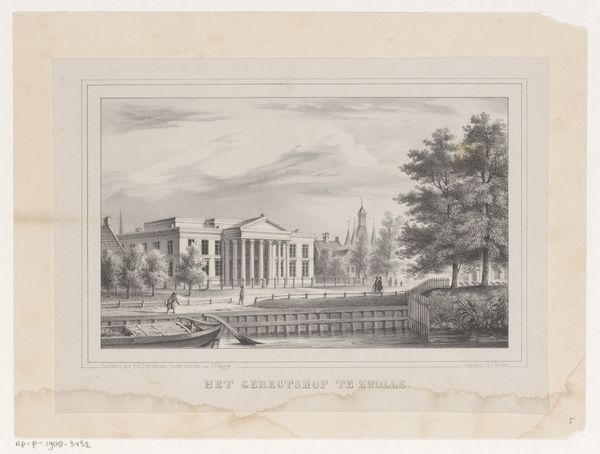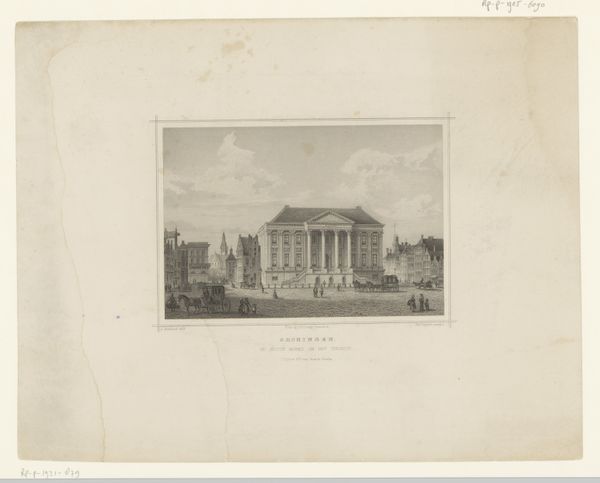
print, engraving, architecture
#
baroque
# print
#
cityscape
#
italian-renaissance
#
engraving
#
architecture
Dimensions: 113 mm (height) x 163 mm (width) (plademaal)
Curator: This is Giovanni Battista Piranesi's engraving of the Trevi Fountain, created between 1741 and 1748. Even in monochrome, you can almost feel the cool spray on your face, can’t you? Editor: Absolutely. It’s amazing how Piranesi captures the Baroque drama with just lines. To me, there’s a nervous energy; it’s not just representational, it’s almost… theatrical. Curator: Precisely! He wasn't just documenting architecture, he was interpreting its spirit. Baroque architecture loves a good dose of theatricality, right? Consider Neptune emerging—the God of fresh water from the ocean—framed by those extravagant gestures, and what appears to be frolicking marine life, all communicating power. I'd be curious what meaning viewers attach to these today... Editor: Power and perhaps a bit of staged authority, yes. Look how tiny the people are compared to the monument. It’s a powerful symbol of Rome itself, wouldn't you agree? It certainly carries some Freudian undertones when observed from this angle! Curator: Ah, yes! An embodiment of civic pride, maybe even boasting? But there's also an accessibility about it that’s characteristic of the Renaissance-- a public work, a shared experience, an affirmation. Editor: Which is an interesting contrast, isn't it? This controlled wildness, a public spectacle expressing cultural cohesion but inviting dreams of an unbridled wild side! And as an engraving, it became so easily reproducible…spreading the Roman dream across Europe, so to speak. Curator: Right! Bringing a grand piece of Rome, in the Age of Enlightenment, straight to your drawing room. What a thought! Thanks for drawing attention to the psychological aspect of visual symbols, especially across time; it gave me new insights! Editor: The pleasure was all mine. The symbolic architecture always feels more impressive once explored from a dreamwork, collective memory or even cultural studies viewpoint. It encourages fresh thinking for our current climate.
Comments
No comments
Be the first to comment and join the conversation on the ultimate creative platform.


